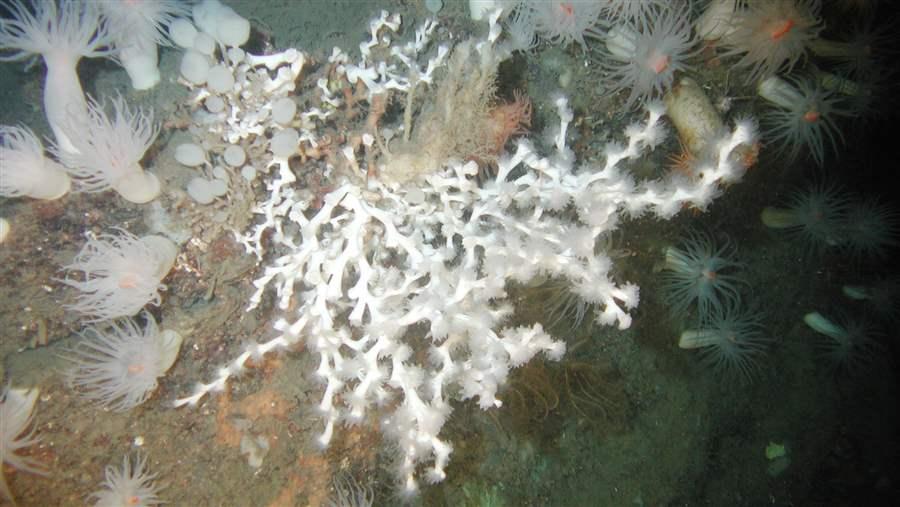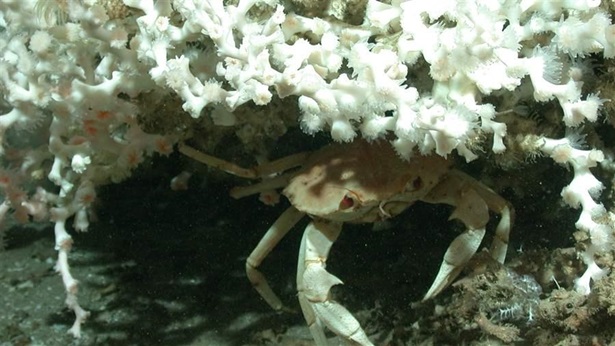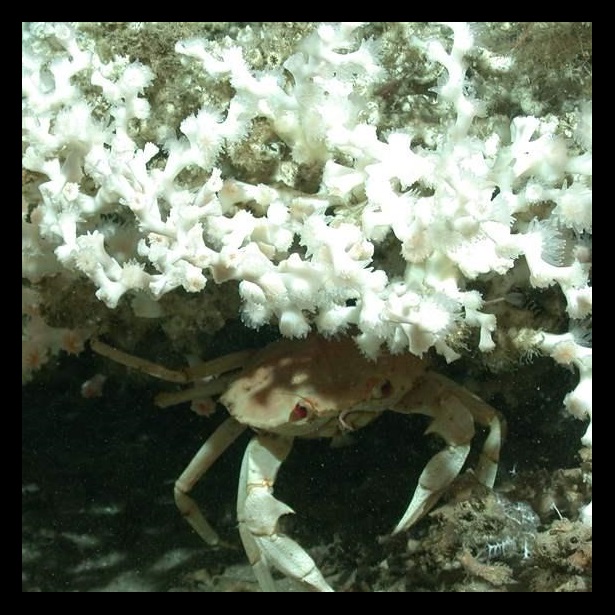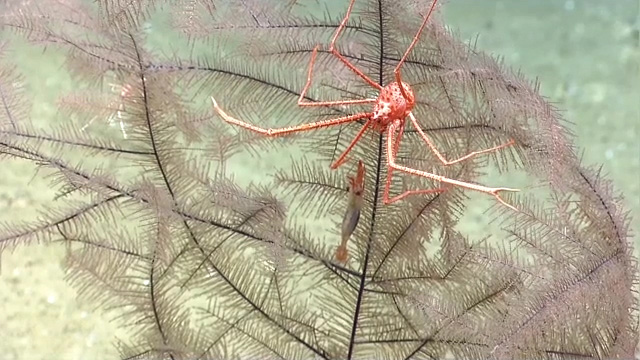Gulf of Mexico’s Deep-Sea Coral Ecosystems Need Your Help
They’re vital to ocean health, hold potential cancer cures, and are under threat. Here’s what you can do

A colony of Lophelia pertusa coral is attached to a large boulder deep in the Gulf of Mexico. A variety of anemones share this habitat.
National Oceanic and Atmospheric AdministrationIn the cold, dark depths of the Gulf of Mexico live some of the world’s oldest and slowest growing organisms: deep-sea corals. Some grow to hundreds of feet tall while others live for thousands of years, and all of them are key players in the marine ecosystem, providing food and habitat for an array of species.
Deep-sea corals are also vulnerable, and now you have a chance to help protect these ancient treasures.
Federal fishery managers are accepting comments—and will host public hearings and a webinar in the coming weeks—on a proposal to protect up to 23 hotspots for deep-sea corals and sponges. These fragile ecosystems face threats, mainly from damaging fishing gear but also from oil and gas development, and changing ocean conditions. And once damaged, slow-growing corals can take centuries to recover, if they survive at all.
The Gulf of Mexico Fishery Management Council, which governs fishing in the Gulf’s federal waters, is expected to vote at its meeting June 18- 21 in Key West, Florida, on a proposal to restrict some fishing gear to help protect these special places that provide food, shelter, and breeding grounds for sharks, starfish, squat lobsters, crabs, and many species of fish, including grouper and snapper. Deep-sea coral communities, which are difficult and expensive to document and study, are also natural disease fighters: They hold important properties that are producing treatments for some cancers.
You can urge managers to protect these corals by signing Pew’s action alert here. You can also write directly to council members here. And you can attend one of eight public hearings or a webinar. The public hearings will be held from 6 to 9 p.m. local time. Dates and locations include:
- Monday, May 7 – Courtyard by Marriott Brownsville, 3955 N. Expressway, Brownsville, Texas 78520.
- Tuesday, May 8 – Port of Palacios, 1602 Main St., Palacios, Texas 77465.
- Wednesday, May 9 – Hampton Inn & Suites Houston/League City, 2320 Gulf Freeway S., League City, Texas 77573.
- Tuesday, May 22 – Webinar. Register here.
- Monday, June 4 – Key West Marriott Beachside, 3841 N. Roosevelt Blvd., Key West, Florida, 33040.
- Monday, June 4 – Louisiana Department of Wildlife and Fisheries Laboratory, 195 Ludwig Annex, Grand Isle, Louisiana, 70358.
- Tuesday, June 5 – Holiday Inn Express & Suites St. Petersburg-Madeira Beach, 4816 100th Way N., St. Petersburg, Florida, 33708.
- Tuesday, June 5 – Courtyard by Marriott Biloxi North/D’Iberville, 11471 Cinema Drive, D’Iberville, Mississippi 39540.
- Wednesday, June 6 – Renaissance Mobile Riverview Plaza Hotel, 64 S. Water St., Mobile, Alabama, 36602.
Please act now to help safeguard this valuable ocean habitat and the potential medical cures it holds.
To learn more, watch our video or read more about these special ecosystems.
Holly Binns directs The Pew Charitable Trusts’ efforts to protect ocean life in the Gulf of Mexico, the U.S. South Atlantic Ocean, and the U.S. Caribbean.


America’s Overdose Crisis
Sign up for our five-email course explaining the overdose crisis in America, the state of treatment access, and ways to improve care
Sign up

Ancient Corals Need Protection From Modern Threats
Deep-sea communities face risks from industrial activity, fishing, and ocean warming and acidification


This video is hosted by YouTube. In order to view it, you must consent to the use of “Marketing Cookies” by updating your preferences in the Cookie Settings link below. View on YouTube
This video is hosted by YouTube. In order to view it, you must consent to the use of “Marketing Cookies” by updating your preferences in the Cookie Settings link below. View on YouTube







